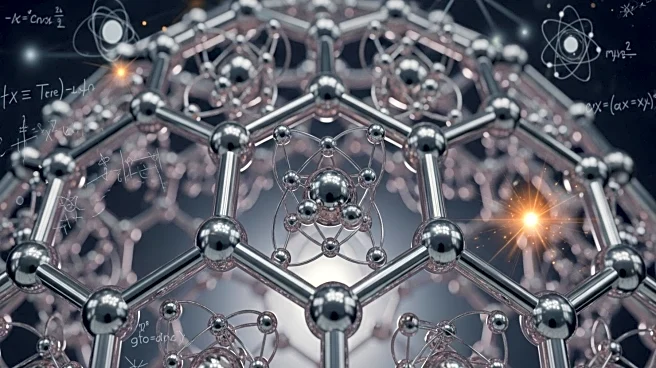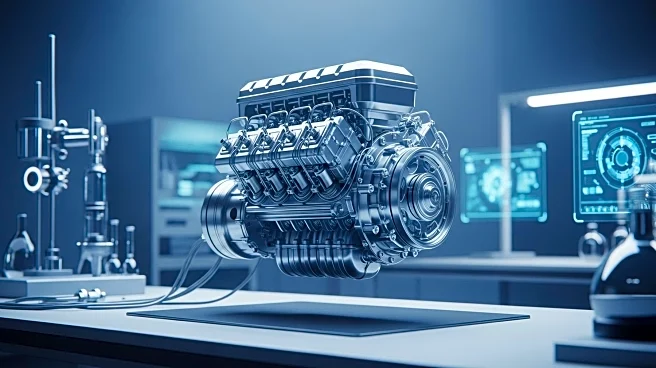What is the story about?
What's Happening?
MIT researchers have uncovered hidden atomic patterns in metals that persist even after extreme processing, challenging decades-old scientific theories. These patterns, previously thought insignificant, can significantly affect a metal's properties, such as mechanical strength and radiation tolerance. The study, published in Nature Communications, reveals a new physical phenomenon explaining the persistence of these patterns. The researchers developed a model to predict chemical patterns, offering potential applications in aerospace, semiconductors, and nuclear reactors.
Why It's Important?
This discovery could revolutionize the manufacturing and design of metal alloys, impacting industries reliant on high-performance materials. By understanding and controlling atomic patterns, engineers can enhance the durability and efficiency of metals used in critical applications, such as aerospace and nuclear energy. The findings may lead to more sustainable and cost-effective production methods, benefiting both manufacturers and consumers.
What's Next?
The research team plans to explore how these atomic patterns develop under various manufacturing conditions, creating a map linking processing steps to chemical patterns. This could enable engineers to design alloys with tailored properties, optimizing performance for specific applications. The study's implications may prompt further research into non-equilibrium states in materials, potentially leading to breakthroughs in material science.
Beyond the Headlines
The discovery highlights the importance of interdisciplinary collaboration and the role of advanced computational tools in scientific research. It underscores the potential for applied research to lead to fundamental discoveries, encouraging scientists to pursue innovative approaches to longstanding problems.
AI Generated Content
Do you find this article useful?













